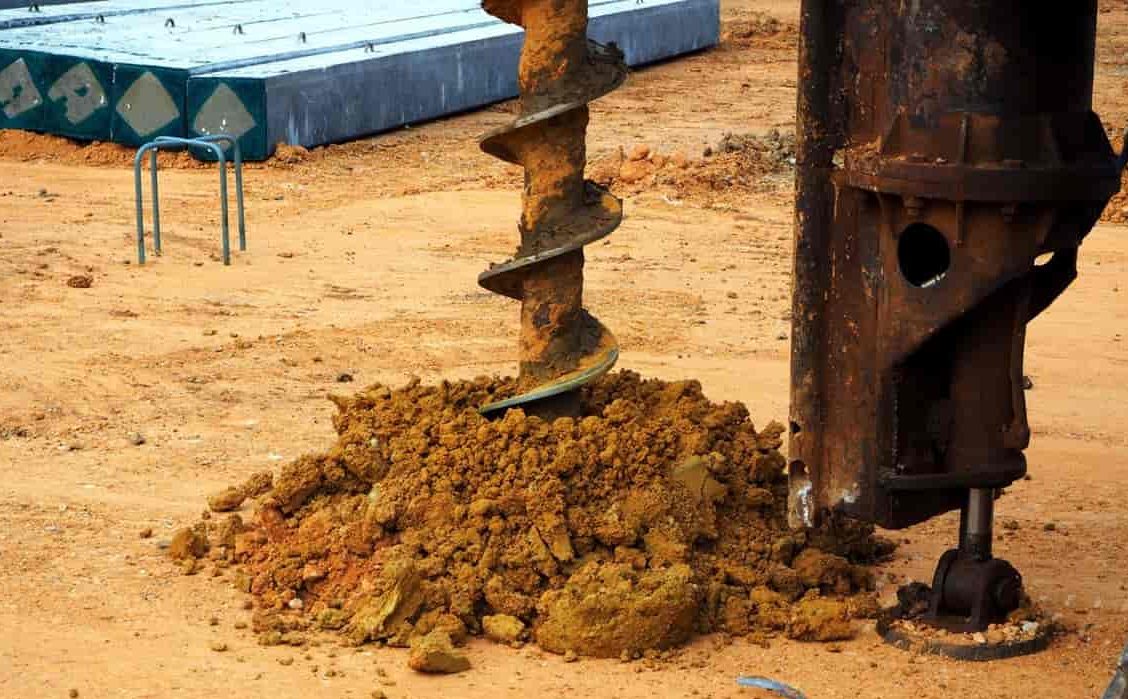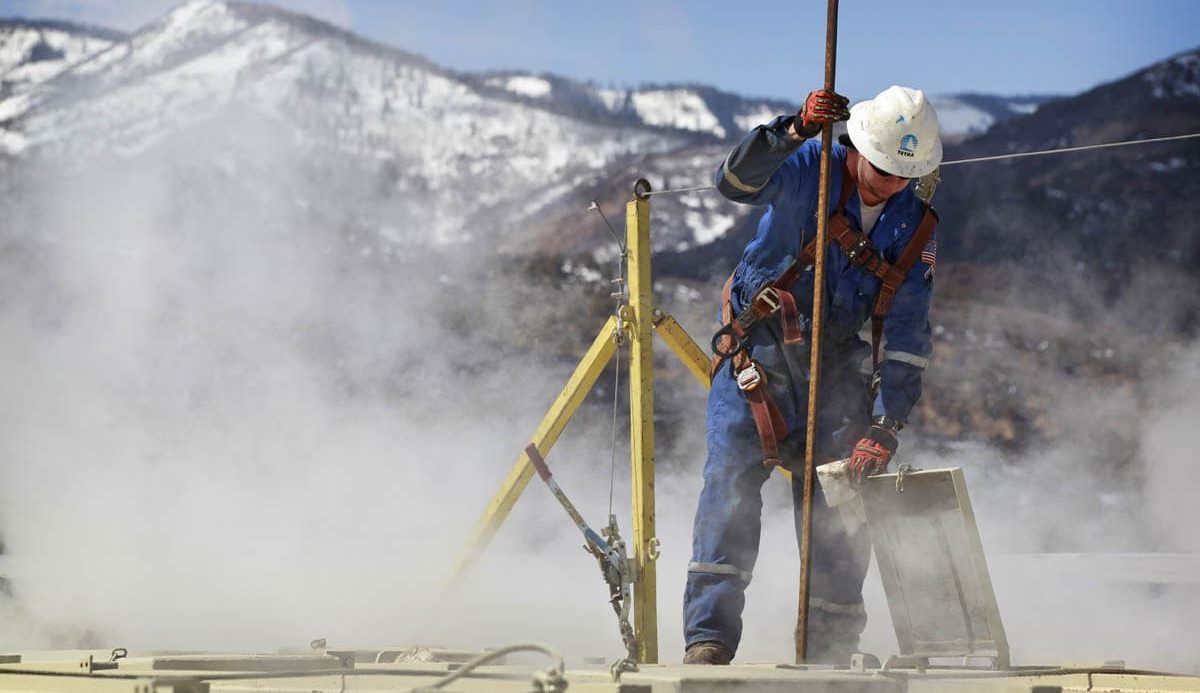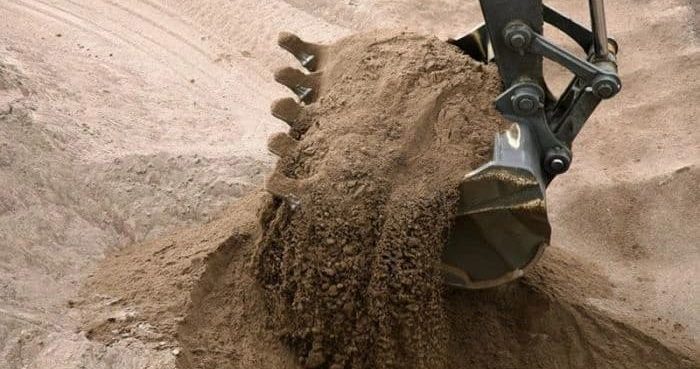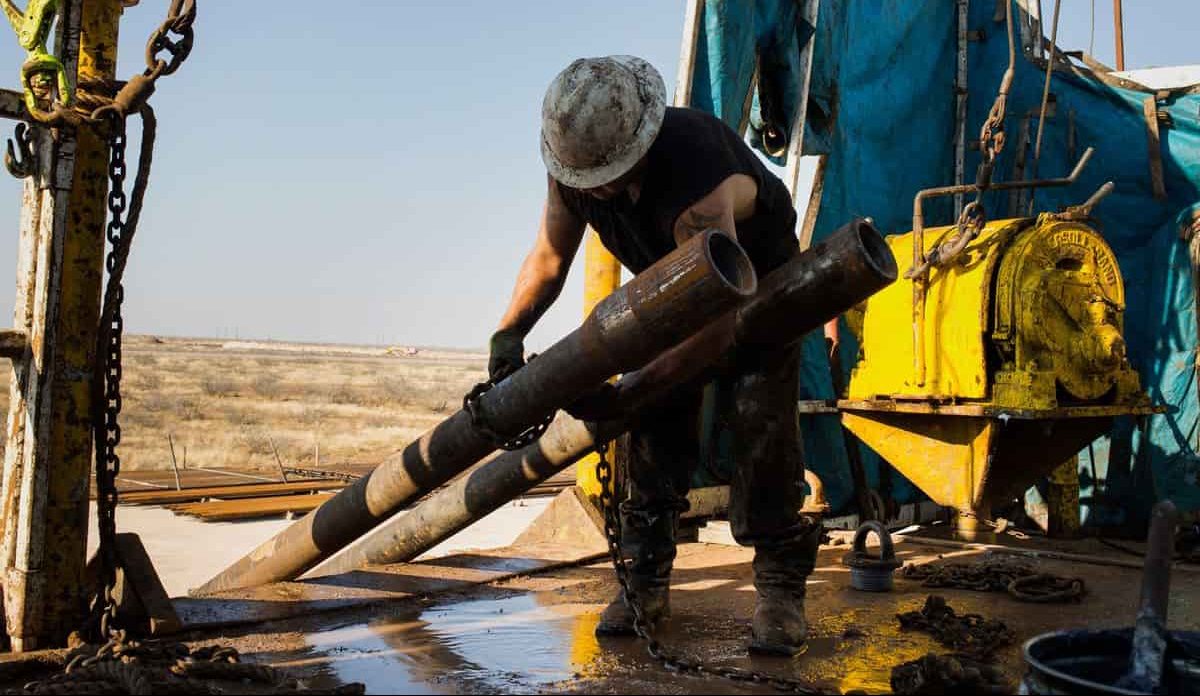The creation of a physical and chemical bond between Gilsonite and permeable formations results in the production of an efficient seal that prevents the passage of drilling mud fluid and works as the perfect additive. Gilsonite minimizes fluid loss and seepage, prevents lost circulation, and protects reactive and low-reactive shale surfaces, even at elevated bottom-hole temperatures. It achieves these feats through its unique ability to function as a plugging agent that is both pliable and solid. HP/HT wells, shales, and under pressured zones require unique drilling fluids and wellbore-strengthening procedures. Proven to strengthen the wellbore when added to an OBM, SBM, or WBM, Gilsonite strengthens the well by the following mechanisms: Shale and low-porosity sands can have their pore pressure transmission reduced while also having their micro-fractures sealed. Preserving the integrity of the interbedding structures Creating a filter cake that works effectively  A "smear effect" is created, which results in a continuous protective sealant along the wellbore wall. The additive is the most effective in preventing differential sticking. By effectively sealing permeable formations – even in zones with a strongly overbalanced pressure differential – and boosting filter cake lubricity, Gilsonite reduces the likelihood of pipes and logging instruments becoming stuck. This applies to both the pipe and the tools. The use of 100% natural Gilsonite in Gulf of Mexico operations is risk-free. The health benefits of naturally occurring Gilsonite are significantly greater than those of their synthetic counterparts. Gilsonite is defined as: Not poisonous (unlike coal or fly ash) Non-carcinogenic Non-mutagenic Safe to handle, use, and store, Gilsonite also satisfies the Gulf of Mexico Environmental Protection Agency's discharge criteria for deep water operations. Gilsonite provides performance that is either equivalent to or superior to that of rival goods but at a far cheaper cost. Gilsonite performance in water-based mud (WBM) applications compares favorably to that of sulfonated asphalts, but the cost of using Gilsonite is between 25 and 50 percent lower. A sulfonated Gilsonite is used in drilling mud for drilling a well, wherein the sulfonated Gilsonite is prepared by reacting at a temperature between 210 and 280 degrees Fahrenheit for a period of time with a mixture of water, Gilsonite that has a softening point of at least 300 degrees Fahrenheit, lignite, a sulfonating compound, and water. When drilling oil and gas wells and other similar types of wells with a rotary well drilling apparatus, circulation fluid or drilling mud is pumped down through a rotary drill pipe and discharged at or adjacent to the bit at the lower end of the rotary drill pipe.
A "smear effect" is created, which results in a continuous protective sealant along the wellbore wall. The additive is the most effective in preventing differential sticking. By effectively sealing permeable formations – even in zones with a strongly overbalanced pressure differential – and boosting filter cake lubricity, Gilsonite reduces the likelihood of pipes and logging instruments becoming stuck. This applies to both the pipe and the tools. The use of 100% natural Gilsonite in Gulf of Mexico operations is risk-free. The health benefits of naturally occurring Gilsonite are significantly greater than those of their synthetic counterparts. Gilsonite is defined as: Not poisonous (unlike coal or fly ash) Non-carcinogenic Non-mutagenic Safe to handle, use, and store, Gilsonite also satisfies the Gulf of Mexico Environmental Protection Agency's discharge criteria for deep water operations. Gilsonite provides performance that is either equivalent to or superior to that of rival goods but at a far cheaper cost. Gilsonite performance in water-based mud (WBM) applications compares favorably to that of sulfonated asphalts, but the cost of using Gilsonite is between 25 and 50 percent lower. A sulfonated Gilsonite is used in drilling mud for drilling a well, wherein the sulfonated Gilsonite is prepared by reacting at a temperature between 210 and 280 degrees Fahrenheit for a period of time with a mixture of water, Gilsonite that has a softening point of at least 300 degrees Fahrenheit, lignite, a sulfonating compound, and water. When drilling oil and gas wells and other similar types of wells with a rotary well drilling apparatus, circulation fluid or drilling mud is pumped down through a rotary drill pipe and discharged at or adjacent to the bit at the lower end of the rotary drill pipe.  This is done in order to complete the drilling process. When drilling operations are carried out normally, a portion of this circulation fluid is allowed to return upward through the well bore. It is then transported to a sump, where it is filtered before being returned to the pump and once again forced down the drill pipe. The primary purposes of the circulation fluid, also known as drilling mud, are as follows: (1) to lubricate and cool the drilling bit; (2) to suspend the cuttings from the drilling operations so that they can be carried to the surface and removed; (3) to prevent excessive amounts of fluids from flowing from the hole into surrounding formations by depositing on the wall of the hole a thin but substantial impervious filter cake; and (4) to serve as a weighting material exerting sufficient pressure to prevent the formation of air pockets. Therefore, an effective drilling mud should display a number of characteristics, such as for instance, viscosity, initial and 10-minute gel strength, thixotropy, fluid loss prevention, stability under a variety of temperature and pressure operating conditions, stability against contaminating fluids, such as salt water, calcium sulfate, cement, and potassium contaminated fluids, etc., etc. Extensive research has been carried out in order to develop a drilling mud that possesses the qualities and features described above. As a consequence, there is now a wide variety of drilling muds available, each of which contains a unique additive formulated to address a specific challenge. However, none of the drilling muds that are now available give the appropriate degree of function performance that is required by the industry across a broad spectrum of actual drilling conditions, as well as at temperatures ranging from extremely high to extremely low.
This is done in order to complete the drilling process. When drilling operations are carried out normally, a portion of this circulation fluid is allowed to return upward through the well bore. It is then transported to a sump, where it is filtered before being returned to the pump and once again forced down the drill pipe. The primary purposes of the circulation fluid, also known as drilling mud, are as follows: (1) to lubricate and cool the drilling bit; (2) to suspend the cuttings from the drilling operations so that they can be carried to the surface and removed; (3) to prevent excessive amounts of fluids from flowing from the hole into surrounding formations by depositing on the wall of the hole a thin but substantial impervious filter cake; and (4) to serve as a weighting material exerting sufficient pressure to prevent the formation of air pockets. Therefore, an effective drilling mud should display a number of characteristics, such as for instance, viscosity, initial and 10-minute gel strength, thixotropy, fluid loss prevention, stability under a variety of temperature and pressure operating conditions, stability against contaminating fluids, such as salt water, calcium sulfate, cement, and potassium contaminated fluids, etc., etc. Extensive research has been carried out in order to develop a drilling mud that possesses the qualities and features described above. As a consequence, there is now a wide variety of drilling muds available, each of which contains a unique additive formulated to address a specific challenge. However, none of the drilling muds that are now available give the appropriate degree of function performance that is required by the industry across a broad spectrum of actual drilling conditions, as well as at temperatures ranging from extremely high to extremely low.  As a result, one of the goals of this invention is to come up with a drilling mud that can better regulate the amount of fluid that is lost when operating under conditions of high temperature and high pressure. Another objective of this innovation is to manufacture a drilling fluid additive that would give stability to the well base and limit the likelihood of shale intrusion. This invention was made possible thanks to the inventor's ingenuity and dedication to his craft. Creating an easier method for the sulfonating of Gilsonite is another one of the objectives of this project. To produce a drilling fluid additive that is compatible with and readily dispersible in water-based fluid and that does not require the addition of emulsifying agents, which are commonly used with regular unreacted Gilsonite to keep the material in suspension, is yet another objective of this invention. The invention was made in order to accomplish this goal. Another goal of this innovation is to provide a drilling mud additive that improves the lubricating properties of drilling mud. This is yet another one of the objectives of this invention. As we proceed through the following details of the invention, further benefits and objects of this invention will become clear to the reader.
As a result, one of the goals of this invention is to come up with a drilling mud that can better regulate the amount of fluid that is lost when operating under conditions of high temperature and high pressure. Another objective of this innovation is to manufacture a drilling fluid additive that would give stability to the well base and limit the likelihood of shale intrusion. This invention was made possible thanks to the inventor's ingenuity and dedication to his craft. Creating an easier method for the sulfonating of Gilsonite is another one of the objectives of this project. To produce a drilling fluid additive that is compatible with and readily dispersible in water-based fluid and that does not require the addition of emulsifying agents, which are commonly used with regular unreacted Gilsonite to keep the material in suspension, is yet another objective of this invention. The invention was made in order to accomplish this goal. Another goal of this innovation is to provide a drilling mud additive that improves the lubricating properties of drilling mud. This is yet another one of the objectives of this invention. As we proceed through the following details of the invention, further benefits and objects of this invention will become clear to the reader.  Gilsonite Drilling Mud Gilsonite is a mineral that is utilized in the cementing of oil wells as well as in drilling mud fluids. Gilsonite is a common component of oil-based drilling muds used in shales and other challenging geological formations. These muds are also employed in sandstone drilling. Gilsonite has a wide range of softening points and comes in a variety of particle sizes. It is possible to reduce the amount of hole washout by including Gilsonite into water-based drilling fluids after it has been rigorously processed. This is accomplished by reducing torque and drag, stabilizing troublesome shales, and closing off extremely porous sands. When oil well cement is blended with Gilsonite, the resulting slurry's weight can be lowered without a commensurate decrease in compressive strength. It can also be used as a bridging and plugging agent to cover fractures in weak formations while cement is being poured. This is possible when the cement is being applied. Gilsonite is also used in the drilling process, according to FLC, which stands for "Filtrate Loss Control" or "Fluid Loss Control" in oil-based mud. Cementing Gilsonite cement is suitable for blocking or plugging an abandoned pipeline, as well as backfilling a mining shaft, tunnel, or excavations, and it can be utilized for these applications. This cement is composed of Portland cement or a mixture of at least two Portland cement components, or it is composed of a mixture of at least two Portland cement components and another type of cement. The cement mix can be used to create a cementitious slurry with a density of less than or equal to 1500 kg/m3 and good compressive strength. It is recommended that while developing the product's cementing composition, Gilsonite be used in amounts ranging from about one-half to approximately ten times by volume the amount of cement used. This guideline pertains to the volume of Gilsonite to cement volume ratio.
Gilsonite Drilling Mud Gilsonite is a mineral that is utilized in the cementing of oil wells as well as in drilling mud fluids. Gilsonite is a common component of oil-based drilling muds used in shales and other challenging geological formations. These muds are also employed in sandstone drilling. Gilsonite has a wide range of softening points and comes in a variety of particle sizes. It is possible to reduce the amount of hole washout by including Gilsonite into water-based drilling fluids after it has been rigorously processed. This is accomplished by reducing torque and drag, stabilizing troublesome shales, and closing off extremely porous sands. When oil well cement is blended with Gilsonite, the resulting slurry's weight can be lowered without a commensurate decrease in compressive strength. It can also be used as a bridging and plugging agent to cover fractures in weak formations while cement is being poured. This is possible when the cement is being applied. Gilsonite is also used in the drilling process, according to FLC, which stands for "Filtrate Loss Control" or "Fluid Loss Control" in oil-based mud. Cementing Gilsonite cement is suitable for blocking or plugging an abandoned pipeline, as well as backfilling a mining shaft, tunnel, or excavations, and it can be utilized for these applications. This cement is composed of Portland cement or a mixture of at least two Portland cement components, or it is composed of a mixture of at least two Portland cement components and another type of cement. The cement mix can be used to create a cementitious slurry with a density of less than or equal to 1500 kg/m3 and good compressive strength. It is recommended that while developing the product's cementing composition, Gilsonite be used in amounts ranging from about one-half to approximately ten times by volume the amount of cement used. This guideline pertains to the volume of Gilsonite to cement volume ratio.  The precise amount of Gilsonite to be used will be determined dependent on the specific outcome that must be achieved. The greater range is used in situations where it is more important to optimize strength, whereas the lower range is used in situations where it is more important to maximize the other attributes that Gilsonite imparts. The particle size of the Gilsonite and the distribution of that size among the particles dictate the strength and porosity-permeability characteristics of the set cement for any given mix ratio. Furthermore, the size of the pores in the cement determines the porosity-permeability characteristics of the set cement. In situations when maximal strength is required, coarse Gilsonite should be utilized. When the lightest possible weight and the lowest possible porosity-permeability are desired, but strength is not the primary concern or must be compromised, an aggregate with a mesh size of minus 50 or finer may be employed. This may be the situation when the lowest feasible porosity-permeability is desired. In the field, you may frequently encounter conditions that necessitate a wide range of particle size and particle size distribution combinations. These circumstances can be difficult. The instances given above are excellent illustrations of extremes. The mixture, on the other hand, must be pumpable throughout the system at all times, beginning where it is mixed and continuing all the way up to where the cement slurry is placed. This is a requirement that cannot be waived. The aggregate can only be present in a specific volume of slurry before it begins to obstruct the pump's operation. When the aggregate becomes coarser, this limit is reduced.
The precise amount of Gilsonite to be used will be determined dependent on the specific outcome that must be achieved. The greater range is used in situations where it is more important to optimize strength, whereas the lower range is used in situations where it is more important to maximize the other attributes that Gilsonite imparts. The particle size of the Gilsonite and the distribution of that size among the particles dictate the strength and porosity-permeability characteristics of the set cement for any given mix ratio. Furthermore, the size of the pores in the cement determines the porosity-permeability characteristics of the set cement. In situations when maximal strength is required, coarse Gilsonite should be utilized. When the lightest possible weight and the lowest possible porosity-permeability are desired, but strength is not the primary concern or must be compromised, an aggregate with a mesh size of minus 50 or finer may be employed. This may be the situation when the lowest feasible porosity-permeability is desired. In the field, you may frequently encounter conditions that necessitate a wide range of particle size and particle size distribution combinations. These circumstances can be difficult. The instances given above are excellent illustrations of extremes. The mixture, on the other hand, must be pumpable throughout the system at all times, beginning where it is mixed and continuing all the way up to where the cement slurry is placed. This is a requirement that cannot be waived. The aggregate can only be present in a specific volume of slurry before it begins to obstruct the pump's operation. When the aggregate becomes coarser, this limit is reduced.  A mixture with a cement-Gilsonite ratio of 1:4 and the coarse aggregate mentioned above, for example, is difficult to pump and is prone to clog confined passageways in the system. This is due to the coarse aggregate increasing the viscosity of the mixture. However, if the water-to-cement ratio is high enough, the same mix will never plug, even when using the fine aggregate mentioned above. To achieve the desired results of wetting the surface of the Gilsonite particles and causing them to form an intimate bond with the borehole's casing and earth formations, an amount of a petroleum solvent proportional to the amount of Gilsonite already present can be added to either the wet or dry mix. This procedure is carried out in order to obtain the desired results. This will prevent corrosion and restrict the pushing away of the cement from the casing and/or borehole wall caused by normal shrinkage during cement setting. These problems are caused by the cement shrinking as it dries. Before pumping the Gilsonite-cement slurry, the solvent can be pumped through the casing and into the cementing zone. This step can be completed ahead of time. This is an alternative to the standard method of integrating the solvent into the mixture. The Control of Fluid Losses (FLC) The product in question is an HPHT fluid loss control aid that is unaffected by high temperatures and works remarkably well as a shale stabilizer, bore hold lubricant, sealer for depleted sand, and wall cake conditioner. Furthermore, the product in issue is resistant to the impacts of high temperatures.
A mixture with a cement-Gilsonite ratio of 1:4 and the coarse aggregate mentioned above, for example, is difficult to pump and is prone to clog confined passageways in the system. This is due to the coarse aggregate increasing the viscosity of the mixture. However, if the water-to-cement ratio is high enough, the same mix will never plug, even when using the fine aggregate mentioned above. To achieve the desired results of wetting the surface of the Gilsonite particles and causing them to form an intimate bond with the borehole's casing and earth formations, an amount of a petroleum solvent proportional to the amount of Gilsonite already present can be added to either the wet or dry mix. This procedure is carried out in order to obtain the desired results. This will prevent corrosion and restrict the pushing away of the cement from the casing and/or borehole wall caused by normal shrinkage during cement setting. These problems are caused by the cement shrinking as it dries. Before pumping the Gilsonite-cement slurry, the solvent can be pumped through the casing and into the cementing zone. This step can be completed ahead of time. This is an alternative to the standard method of integrating the solvent into the mixture. The Control of Fluid Losses (FLC) The product in question is an HPHT fluid loss control aid that is unaffected by high temperatures and works remarkably well as a shale stabilizer, bore hold lubricant, sealer for depleted sand, and wall cake conditioner. Furthermore, the product in issue is resistant to the impacts of high temperatures.  In addition to these functions, even at high temperatures, the composition does not change considerably. A Gilsonite, also known as asphalt, asphalt, Gilsonite, natural asphalt, and natural bitumen, is the main component of the HPHT fluid loss control aid. Furthermore, the HPHT fluid loss control aid contains a surfactant, which is normally nonionic. Causticized lignite is one of the components of the HPHT fluid loss control aid. Carbon black and other forms of lignite that have been solubilized are also included in the assistance. It has good stability at high temperatures such as 300 °F, stabilizes troublesome shales and reduces borehole erosion, aids in the sealing of depleted sands, reduces torque and drag, has no negative effects on the flow properties of properly conditioned drilling fluid, and lowers the overall cost of the good. These benefits are realized as a direct result of the fluid loss control assist, which lowers HPHT filtrate loss, maintains a high level of stability at high temperatures such as 300 degrees Fahrenheit, reduces borehole pressure, and stabilizes difficult shales.
In addition to these functions, even at high temperatures, the composition does not change considerably. A Gilsonite, also known as asphalt, asphalt, Gilsonite, natural asphalt, and natural bitumen, is the main component of the HPHT fluid loss control aid. Furthermore, the HPHT fluid loss control aid contains a surfactant, which is normally nonionic. Causticized lignite is one of the components of the HPHT fluid loss control aid. Carbon black and other forms of lignite that have been solubilized are also included in the assistance. It has good stability at high temperatures such as 300 °F, stabilizes troublesome shales and reduces borehole erosion, aids in the sealing of depleted sands, reduces torque and drag, has no negative effects on the flow properties of properly conditioned drilling fluid, and lowers the overall cost of the good. These benefits are realized as a direct result of the fluid loss control assist, which lowers HPHT filtrate loss, maintains a high level of stability at high temperatures such as 300 degrees Fahrenheit, reduces borehole pressure, and stabilizes difficult shales.
💰 Tenfold your income 💎
